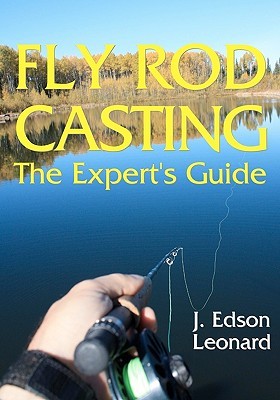
- We will send in 10–14 business days.
- Author: J Edson Leonard
- Publisher: CreateSpace Independent Publishing Platform
- Year: 2010
- Pages: 98
- ISBN-10: 1438261748
- ISBN-13: 9781438261744
- Format: 17.8 x 25.4 x 0.5 cm, softcover
- Language: English
- SAVE -10% with code: EXTRA
Reviews
Description
Fly-rod casting demands a combination of timing and co-ordination. It is not difficult to become an accurate and accomplished caster if the start is made in the right direction. The right direction, in this instance, is the understanding of the fundamentals and mechanics of fly-rod casting and their practical use. Experience is not always the best teacher, especially if that experience has been of a haphazard nature and acquired without giving much thought to the experience of others. A person may have a fly rod and catch fish with it for several years and still be a poor caster. Unconsciously he may have formed bad casting habits which have become so deeply rooted as to make their correction almost a matter of learning to cast over again. If you observe well, you will notice that many fly fishers have a seemingly limp, aimless style of casting and slap their casts on the water with no precision or delicacy whatever. Then occasionally you will notice one rod moving in perfect rhythm, its casts crisp and clean. The chances are its owner understands the simple mechanics of casting and uses them to advantage. The ability to place the fly in a difficult-to-reach place is often measured by the weight of the creel at the end of the day, but casting technique is something more than mere accomplishment; it is as necessary as knowing how to hold a bat at the plate or how to correct a rifle sight for windage. This book covers the use of the fly rod and fly-rod tackle, stressing the casting phase throughout. Its primary purpose is to equip the newcomer with such information as to make the selection of tackle logical and simple, and to make the mechanics of casting with the fly rod easy to understand.
EXTRA 10 % discount with code: EXTRA
The promotion ends in 15d.02:47:19
The discount code is valid when purchasing from 10 €. Discounts do not stack.
- Author: J Edson Leonard
- Publisher: CreateSpace Independent Publishing Platform
- Year: 2010
- Pages: 98
- ISBN-10: 1438261748
- ISBN-13: 9781438261744
- Format: 17.8 x 25.4 x 0.5 cm, softcover
- Language: English English
Fly-rod casting demands a combination of timing and co-ordination. It is not difficult to become an accurate and accomplished caster if the start is made in the right direction. The right direction, in this instance, is the understanding of the fundamentals and mechanics of fly-rod casting and their practical use. Experience is not always the best teacher, especially if that experience has been of a haphazard nature and acquired without giving much thought to the experience of others. A person may have a fly rod and catch fish with it for several years and still be a poor caster. Unconsciously he may have formed bad casting habits which have become so deeply rooted as to make their correction almost a matter of learning to cast over again. If you observe well, you will notice that many fly fishers have a seemingly limp, aimless style of casting and slap their casts on the water with no precision or delicacy whatever. Then occasionally you will notice one rod moving in perfect rhythm, its casts crisp and clean. The chances are its owner understands the simple mechanics of casting and uses them to advantage. The ability to place the fly in a difficult-to-reach place is often measured by the weight of the creel at the end of the day, but casting technique is something more than mere accomplishment; it is as necessary as knowing how to hold a bat at the plate or how to correct a rifle sight for windage. This book covers the use of the fly rod and fly-rod tackle, stressing the casting phase throughout. Its primary purpose is to equip the newcomer with such information as to make the selection of tackle logical and simple, and to make the mechanics of casting with the fly rod easy to understand.


Reviews